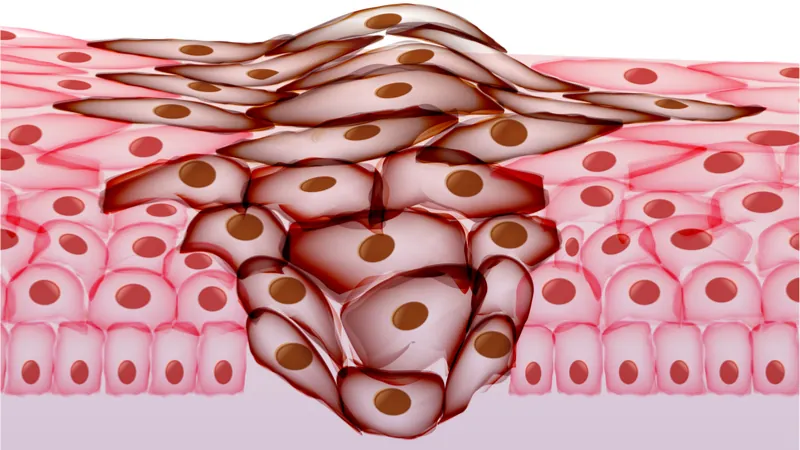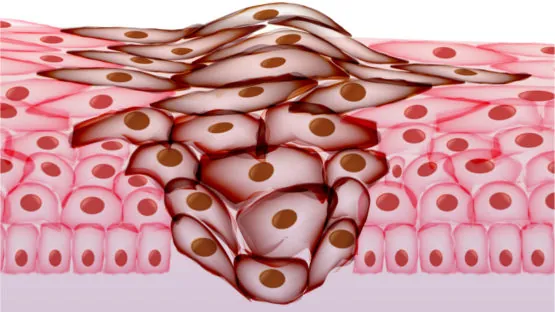A new open-access study from researchers at the Biomedical Research Centre in the United Kingdom shows how two antibiotics and Vitamin C can be combined to suppress cancer stem cells (CSCs) of the breast [1].
While antibiotics are not normally effective against cancer, and Vitamin C is more well-known for its role in supporting the immune system, this combination has been shown to attack cancer stem cells through a combination of mitochondrial suppression and oxidative attacks on the mitochondria, thus causing mitochondrial growth to falter.
Mitochondria
Mitochondria evolved from symbiotic bacteria that live in our cells, and these “powerhouses of the cell” generate energy in the form of adenosine triphosphate (ATP). This is a small molecule used in cells as a coenzyme, and it is often referred to as the “molecular unit of currency”, as it represents the basic form of chemical energy used by our cells. The majority of cellular processes, such as synthesis of proteins, synthesis of membranes, cell movement, and cell division, need energy in the form of ATP, and without functioning mitochondria, we could not generate the energy we need to survive.
Normally, preventing mitochondrial dysfunction is critical, and damage to mitochondrial DNA (mtDNA) is something we do not want; indeed, the goal of MitoSENS is to move mtDNA into the nucleus in order to protect it from damage.
However, CSCs have a substantially greater mitochondrial mass than normal cells, which is one factor that provides for their uncontrolled growth. Because we do not want these lethal cells to exist at all, attacking them through intentionally inducing mitochondrial dysfunction is a possible strategy for dealing with them.
Productively Using Side Effects
Doxycycline inhibits the small mitochondrial ribosome as a side effect, and one of azithromycin’s side effects is to inhibit the large mitochondrial ribosome. This study shows that by inhibiting both of these ribosomes, this combination (D+A) effectively suppresses the generation of energy in cancer cells. When coupled with Vitamin C, which becomes a pro-oxidant in the presence of iron, the combination causes cancer cells to become “rho-zero-like”, preventing them from properly encoding mitochondrial proteins. This starves them of ATP and forces them into a non-dividing, quiescent state, thus ameloriating their danger as cancer cells.
Surprisingly, this treatment was found to significantly lose effectiveness if some of its components were administered in advance. One week of pre-treatment with either vitamin C or D+A reduced the effectiveness of the full five-day treatment to between 60 and 70 percent. The researchers hypothesize that the increase in oxidative stress led to an antioxidant response, protecting the cancerous cells against the full power of the treatment.
Abstract
Here, we devised a new strategy for eradicating cancer stem cells (CSCs), via a “synthetic-metabolic” approach, involving two FDA-approved antibiotics and a dietary vitamin supplement. This approach was designed to induce a “rho-zero-like” phenotype in cancer cells. This strategy effectively results in the synergistic eradication of CSCs, using vanishingly small quantities of two antibiotics. The 2 metabolic targets are i) the large mitochondrial ribosome and ii) the small mitochondrial ribosome. Azithromycin inhibits the large mitochondrial ribosome as an off-target side-effect. In addition, Doxycycline inhibits the small mitochondrial ribosome as an off-target side-effect. Vitamin C acts as a mild pro-oxidant, which can produce free radicals and, as a consequence, induces mitochondrial biogenesis. Remarkably, treatment with a combination of Doxycycline (1 μM), Azithromycin (1 μM) plus Vitamin C (250 μM) very potently inhibited CSC propagation by >90%, using the MCF7 ER(+) breast cancer cell line as a model system. The strong inhibitory effects of this DAV triple combination therapy on mitochondrial oxygen consumption and ATP production were directly validated using metabolic flux analysis. Therefore, the induction of mitochondrial biogenesis due to mild oxidative stress, coupled with inhibition of mitochondrial protein translation, may be a new promising therapeutic anti-cancer strategy. Consistent with these assertions, Vitamin C is known to be highly concentrated within mitochondria, by a specific transporter, namely SVCT2, in a sodium-coupled manner. Also, the concentrations of antibiotics used here represent sub-antimicrobial levels of Doxycycline and Azithromycin, thereby avoiding the potential problems associated with antibiotic resistance. Finally, we also discuss possible implications for improving health-span and life-span, as Azithromycin is an anti-aging drug that behaves as a senolytic, which selectively kills and removes senescent fibroblasts.
Conclusion
While antibiotics are not normally the first choice for a cancer treatment, and oxidative stress may seem to be an unusual approach with which to combat the proliferation of cancer, the fact that these compounds are already approved by the FDA makes it feasible for this treatment to be released to the public more swiftly than a freshly developed drug would be.
However, one potential problem with this approach may be that it has effects on healthy cells, and only through clinical trials will we be sure that this treatment only affects CSCs without causing undue harm to other cells. In the future, it may be possible to use more targeted compounds that more directly cause oxidative stress in rapidly growing cancer stem cells, thus potentially providing a new avenue of treatment for multiple forms of cancer.
Literature
[1] Fiorillo, M., Tóth, F., Sotgia, F., & Lisanti, M. P. (2019). Doxycycline, Azithromycin and vitamin C (DAV): a potent combination therapy for targeting mitochondria and eradicating cancer stem cells (CSCs). Aging, 11(8), 2202-2216.




